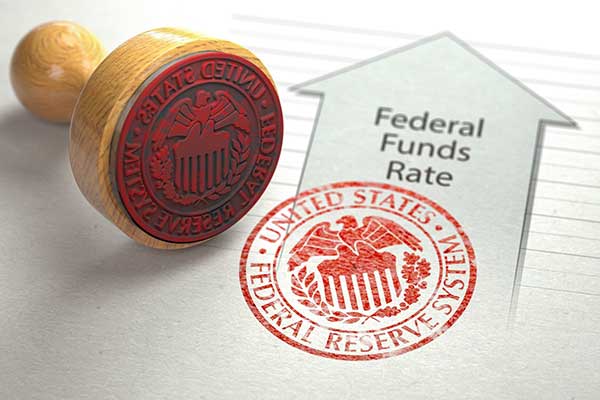Fixed rate vs. variable rate, which rate option is best for you? This is a commonly asked question amongst borrowers when it comes to personal loans, consumers when it comes to credit cards, and homebuyers when it comes to mortgages. Plus, don’t forget scholars when it comes to private student loans, drivers when it comes to auto loans, and even homeowners when it comes to choosing their energy provider and electricity plan.
In this article, we’ll break down a detailed explanation of both fixed rates and variable rates. Our goal is to help you determine which rate option is best for you. Regardless of where you are in life’s adventure, we want you to be able to exercise your power to choose with confidence.
What Is a Variable Rate?
A variable interest rate, or variable rate, is a payment you make on a loan or another bill that has the ability to fluctuate. This means that while you know what your initial interest rate or payment amount will be, after that first monthly payment, there’s a good chance you’ll see your interest rate change. Variable rates usually start out lower than fixed rates, but you never really know how much your bill will be after that first month.
In general, lenders make changes in their interest rates based on how the benchmark interest rate or index rate changes in a loan situation. When the index rate changes, the lender will typically set their base rate by referring to one of two benchmarks: the Wall Street Journal prime rate or the London Interbank Offered Rate (LIBOR).
When it comes to finding and choosing an energy plan, variable-rate plan prices mirror market rates. At the same time, indexed-rate energy plans use a public index to set the pricing. Indexed-rate energy plans are more of a hybrid between fixed-rate and variable-rate plans.
With a variable interest rate or plan, there are no contracts, and you’re typically able to make changes at any time without penalty. Choosing a variable rate could pay off in the right situation. Here are a few examples.
The Power to Choose | FAQ’s – Your Questions Answered
1) Variable-Rate Student Loans
While variable interest rate loans are risky, they can pay off big time for some. Variable-rate loans may be worth taking a chance on if you’re able to follow the trend, and it looks promising. Students looking to take on a new loan, or even those refinancing an existing loan, could also consider a variable-rate student loan. This is an excellent idea for students who are looking at a short-term loan or those who need a lower interest rate now but aren’t worried about the potential for a higher interest rate down the road.
2) Variable-Rate Mortgages
Variable-rate mortgages, also known as adjustable-rate mortgages, aren’t as safe as fixed-rate mortgages but have the potential to offer homeowners substantial savings. If you’re not planning to keep your home for 30 years, there’s little need to take out a 30-year fixed-rate mortgage. Instead, consider a variable-rate mortgage for the length of time you anticipate keeping the house. Then, when that time’s up, if you decide to keep the home and your interest rate increases too much, you always have the ability to refinance.
3) Variable-Rate Electricity Plans
Since variable-rate electricity plans mirror the current market rates, these plans expose consumers to something called market price volatility, which is how quickly energy prices can change due to supply and demand. This means choosing a variable rate plan could be ideal when energy rates are either stable or expected to decrease.
What Is the Federal Reserve Interest Rate?
Banks and credit unions have to borrow money, too. Consumers aren’t the only ones looking for loans. So, how is the interest rate determined for the lenders? Cue the federal reserve interest rate. This is also referred to as the federal funds rate and is used to maintain a stable economy.
Our banks and credit unions’ interest rate when borrowing money from each other is the federal funds rate. The Federal Reserve determines the Federal Reserve interest rate based on economic needs. They can make adjustments to the rate at any time. Changes to this interest rate impact consumers since companies use it to influence credit card interest rates, loans, and savings accounts.
What Is a Fixed Rate?
Like a variable rate, a fixed rate is exactly what it sounds like. Fixed-rate plans are when you sign a contract to pay an agreed-upon rate for a set period of time. It’s here that you’ll find the most stability. If you’re not a huge fan of surprises when it comes to your finances, and you prefer to know ahead of time what your monthly bill is going to be, consider choosing a fixed-rate plan.
This way, if there are rate increases, you won’t be affected during the period of time that you’re in contract. Of course, you’ll also miss out on the opportunity to save money should the market rates drop. That’s because most fixed-rate agreements come with an early termination fee or a cancellation penalty. For many, having predictability in their monthly bill is worth signing a contract and paying a slightly higher rate. Let’s check out some examples of when choosing a fixed rate pays off.
1) Fixed-Rate Loans
When it’s time for you to take out a new loan, predictability can be your best friend. With this type of loan, you’ll know ahead of time precisely what your monthly loan payments are going to be. The predictability of your fixed-rate loan amount can provide you with the knowledge you need to understand whether you’re able to afford to borrow money in the first place.
But beyond that, you’ll also be able to figure out another crucial factor with this loan type. When you take out a fixed interest rate loan, you’re able to pre-determine how much money in interest you’ll owe the lender during repayment. You can even look at multiple scenarios. How much extra will you spend if you only pay the minimum amount for the life of the loan vs. if you make larger payments over the loan term?
2) Fixed-Rate Mortgages
Fixed-rate mortgages are the most popular mortgage option for homeowners today. Why? Because they’re simple and they’re safe. Here’s the thing. The difference between your mortgage and any other type of loan is the sheer length of time it takes to pay off. Mortgages are not short-term loans.
To put this in perspective, the average auto loan term is just under six years, while the most popular mortgage loan term is 30 years. Most homeowners prefer to lock in a secure interest rate (especially when there’s a low-interest-rate environment). The alternative is continually worrying about the potential risk of constant interest rate increases throughout a long loan life.
3) Fixed-Rate Electricity Plans
Choosing a fixed rate electricity plan can really pay off. In an unexpected energy crisis, such as when severe weather strikes, you won’t have to worry about electricity rate increases for the period of time you’re under contract. Choosing a fixed-rate plan offers you protection from market price volatility. You won’t be affected by changes in commodity prices.
How Can I Subscribe to a New Electricity Plan When I Already Have One?
Using a comparison tool on the Power to Choose marketplace website, you can shop for, compare, and select an energy provider and electricity plan that perfectly suits your lifestyle.
The Public Utility Commission of Texas (additionally referred to as the PUC of Texas or PUCT), created in 1975, has since established the Power to Choose website (www.powertochoose.org). The PUC of Texas regulates electricity in the state of Texas. Their primary focus is to protect customers and foster competition in the electricity market. The Power to Choose website also aids customers in finding a retail energy provider.
Power to Choose Texas: A Guide for Texas Electricity Rates
Enter your ZIP Code and compare electricity rates
How Do You Use the Website for Power To Choose?
When visiting the Power to Choose website, accessing the electricity rates from various retail energy providers in your residential area of Texas is simple. Once logged in, narrow down your search results to ensure you find the plans that will suit your needs according to the lifestyle that you lead.
When it comes to choosing your electricity plan in a deregulated market, it’s unlikely that you will have a shortage of products and options available. There are a significant number of retail energy providers across the Texas market who offer a variety of products, such as fixed-rate plans, indexed-rate plans, and variable-rate plans.
As soon as you enter your zip code, you will see all of the providers who are offering competitive electricity rates in your location. You have the power to choose the best option for you.
It’s Time to Exercise Your Power to Choose
There are many different variations of products on the market. That makes shopping online on the Power to Choose marketplace website that much more important. Using this site is the quickest and easiest way to compare all of the available electricity plans on a fair scale, apples-to-apples. Plus, once you’ve found the perfect electricity plan for you, you can often follow a link right from the website to start making the switch. If not, there’s always a phone number listed.
Once you’re done exploring electricity rates, it’s time to start evaluating your other bills. Compare the benefits of fixed rate vs. variable rate for all of your personal loans, auto loans, student loans, mortgages, and anything else that might be relevant. Remember, sometimes it pays to take a risk while other times the cautious route may be more beneficial. There are no wrong answers here, so do your research, deliberate carefully, and exercise your power to choose the best rate options for you.
Brought to you by energysavings.com
All images licensed from Adobe Stock.
Featured image:




